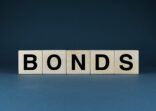Short-dated high yield bonds could provide the sought-after yield pick-up over investment-grade bonds, Gerhard, who manages the BNY Mellon Global Short-dated High Yield Bond Fund, told FSA.
Although the yield is not as high as that of longer term high yield bonds, the lower duration (sensitivity to interest rates) and thus lower volatility of short-term bonds provides a better risk-return profile, he believes.
The fund does not have a specific limit on bond maturity. But those with longer maturity dates must be callable in the near future and the issuer calling the bond must be very likely. “I buy bonds that are going to get refinanced through maturity or call within one or two years,” Gerhard said.
The fund does not trade bonds in principle, holding them to maturity or until they are called. The manager will, however, sell bonds for which he has concerns about a company defaulting. “At the moment, the anticipated maturity profile of the fund is 1.25 years,” Gerhard added.
The primary goal of a high yield bond fund manager is to minimise defaults, he said. “This allows you to harvest the entire coupon as income, since you don’t have to provision for defaults.”
He said that the fund is managed using a bottom-up approach with a limited top-down overlay, focused primarily on the health of economies or sectors and its effect on the number of defaults.
Limited liquidity
The fund is highly concentrated, compared to other bond funds, with around 75 holdings. It invests in US, UK, European, and emerging market high yield bonds. Emerging markets account for around 12% of the portfolio.
With such high concentration, “it has become harder to find [liquid] assets”, Gerhard said.
The lack of secondary liquidity limits the fund’s ability to grow. “If the fund should get significantly larger, I would have to buy positions that are too big. That would take too long to sell and we would get things wrong. We have to have the ability to exit.”
The fund does not follow a benchmark and its target return is Libor + 2%.
The selection of the securities is based on analysis of companies, with the focus on their ability and need to refinance their debts, he said.
Meetings with the company management allow the fund managers to zero in on companies whose intention is to improve their credit profiles, to add leverage, or to be acquired, for example by a private equity fund. Such events would usually require refinancing of the previous debt. In particular, a credit upgrade from B+ to BB comes with a relaxation of bond covenants, so it is a good reason for a company to refinance.
“We buy callable bonds as long as we have a clear story behind why the company is going to refinance,” he said.
While high yield bonds make up 80% of the portfolio, it can also invest in syndicated loans, asset-backed securities, convertibles and credit default swaps.
The main risk to the fund is an increase in the number of defaults, which could be sparked by excess leverage or central bank policy mistakes. Gerhard considers both these risks relatively low.
“The leverage is stable or declining,” he said. “Central banks have become smarter and they have many different tools to stimulate the economy.”
BNY Mellon Global Short-Dated High Yield Bond Fund vs benchmark and category average


















